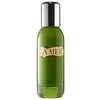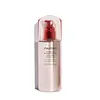What's inside
What's inside
 Key Ingredients
Key Ingredients

 Benefits
Benefits

 Concerns
Concerns

 Ingredients Side-by-side
Ingredients Side-by-side

Butylene Glycol
HumectantGlycerin
HumectantAlgae Extract
EmollientBis-PEG-12 Dimethicone
EmollientHydrogenated Lecithin
EmulsifyingCaprylic/Capric Triglyceride
MaskingSucrose
HumectantLimnanthes Alba Seed Oil
Skin ConditioningSesamum Indicum Seed Oil
EmollientMedicago Sativa Seed Powder
Skin ConditioningHelianthus Annuus Seedcake
AbrasivePrunus Amygdalus Dulcis Seed Meal
AbrasiveEucalyptus Globulus Leaf Oil
PerfumingSodium Gluconate
Skin ConditioningCopper Gluconate
Skin ConditioningCalcium Gluconate
HumectantMagnesium Gluconate
Skin ConditioningZinc Gluconate
Skin ConditioningTocopheryl Succinate
AntioxidantNiacin
SmoothingSesamum Indicum Seed Powder
Skin ConditioningCitrus Aurantifolia Peel Extract
CleansingCommiphora Mukul Resin Extract
Skin ConditioningCodium Tomentosum Extract
Skin ProtectingPolygonum Cuspidatum Root Extract
AntioxidantVitis Vinifera Seed Extract
AntimicrobialHumulus Lupulus Extract
AntimicrobialCitrus Reticulata Peel Extract
Skin ConditioningAsparagopsis Armata Extract
Skin ProtectingSalicornia Herbacea Extract
Skin ConditioningAlcaligenes Polysaccharides
EmollientGlucose
HumectantPorphyridium Cruentum Extract
Skin ConditioningSigesbeckia Orientalis Extract
Skin ConditioningSqualane
EmollientCholesterol
EmollientCaffeine
Skin ConditioningUndaria Pinnatifida Extract
Skin ConditioningAscophyllum Nodosum Extract
Skin ConditioningLaminaria Digitata Extract
Skin ProtectingMaris Sal
Skin ConditioningCastanea Sativa Seed Extract
Skin ConditioningPlankton Extract
Skin ConditioningGlycine Soja Seed Extract
Skin ConditioningAcetyl Hexapeptide-8
HumectantTrehalose
HumectantLactoperoxidase
StabilisingDimethicone
EmollientLecithin
EmollientDipotassium Glycyrrhizate
HumectantGlycine Soja Protein
EmulsifyingRosmarinus Officinalis Leaf Extract
AntimicrobialPunica Granatum Fruit Juice
MaskingGlucose Oxidase
StabilisingLinolenic Acid
CleansingHydrolyzed Rice Extract
Skin ConditioningLaminaria Saccharina Extract
Skin ProtectingYeast Extract
Skin ConditioningAcetyl Glucosamine
Skin ConditioningBisabolol
MaskingGlycosaminoglycans
EmollientEthylhexylglycerin
Skin ConditioningSodium PCA
HumectantTourmaline
Linoleic Acid
CleansingSorbitol
HumectantUrea
BufferingTocopheryl Acetate
AntioxidantPentylene Glycol
Skin ConditioningSodium Hyaluronate
HumectantPolyquaternium-51
Skin ConditioningEthylbisiminomethylguaiacol Manganese Chloride
AntioxidantHydroxypropyl Cyclodextrin
MaskingMagnesium Ascorbyl Phosphate
AntioxidantNordihydroguaiaretic Acid
AntioxidantSodium Hydroxide
BufferingAlcohol Denat.
AntimicrobialCarbomer
Emulsion StabilisingXanthan Gum
EmulsifyingPotassium Sorbate
PreservativeParfum
MaskingDisodium EDTA
BHT
AntioxidantPhenoxyethanol
PreservativeAmyl Cinnamal
PerfumingHexyl Cinnamal
PerfumingBenzyl Benzoate
AntimicrobialCitronellol
PerfumingLimonene
PerfumingCoumarin
PerfumingLinalool
PerfumingCI 42090
Cosmetic ColorantCI 14700
Cosmetic ColorantButylene Glycol, Glycerin, Algae Extract, Bis-PEG-12 Dimethicone, Hydrogenated Lecithin, Caprylic/Capric Triglyceride, Sucrose, Limnanthes Alba Seed Oil, Sesamum Indicum Seed Oil, Medicago Sativa Seed Powder, Helianthus Annuus Seedcake, Prunus Amygdalus Dulcis Seed Meal, Eucalyptus Globulus Leaf Oil, Sodium Gluconate, Copper Gluconate, Calcium Gluconate, Magnesium Gluconate, Zinc Gluconate, Tocopheryl Succinate, Niacin, Sesamum Indicum Seed Powder, Citrus Aurantifolia Peel Extract, Commiphora Mukul Resin Extract, Codium Tomentosum Extract, Polygonum Cuspidatum Root Extract, Vitis Vinifera Seed Extract, Humulus Lupulus Extract, Citrus Reticulata Peel Extract, Asparagopsis Armata Extract, Salicornia Herbacea Extract, Alcaligenes Polysaccharides, Glucose, Porphyridium Cruentum Extract, Sigesbeckia Orientalis Extract, Squalane, Cholesterol, Caffeine, Undaria Pinnatifida Extract, Ascophyllum Nodosum Extract, Laminaria Digitata Extract, Maris Sal, Castanea Sativa Seed Extract, Plankton Extract, Glycine Soja Seed Extract, Acetyl Hexapeptide-8, Trehalose, Lactoperoxidase, Dimethicone, Lecithin, Dipotassium Glycyrrhizate, Glycine Soja Protein, Rosmarinus Officinalis Leaf Extract, Punica Granatum Fruit Juice, Glucose Oxidase, Linolenic Acid, Hydrolyzed Rice Extract, Laminaria Saccharina Extract, Yeast Extract, Acetyl Glucosamine, Bisabolol, Glycosaminoglycans, Ethylhexylglycerin, Sodium PCA, Tourmaline, Linoleic Acid, Sorbitol, Urea, Tocopheryl Acetate, Pentylene Glycol, Sodium Hyaluronate, Polyquaternium-51, Ethylbisiminomethylguaiacol Manganese Chloride, Hydroxypropyl Cyclodextrin, Magnesium Ascorbyl Phosphate, Nordihydroguaiaretic Acid, Sodium Hydroxide, Alcohol Denat., Carbomer, Xanthan Gum, Potassium Sorbate, Parfum, Disodium EDTA, BHT, Phenoxyethanol, Amyl Cinnamal, Hexyl Cinnamal, Benzyl Benzoate, Citronellol, Limonene, Coumarin, Linalool, CI 42090, CI 14700
Water
Skin ConditioningDipropylene Glycol
HumectantGlycerin
HumectantDiglycerin
HumectantPropanediol
SolventPEG/PPG-14/7 Dimethyl Ether
Skin ConditioningButylene Glycol
HumectantDiphenylsiloxy Phenyl Trimethicone
Skin ConditioningPEG-60 Hydrogenated Castor Oil
EmulsifyingIsostearyl Alcohol
EmollientPhenoxyethanol
PreservativeSodium PCA
HumectantPolyglyceryl-2 Diisostearate
EmulsifyingPEG-20
HumectantErythritol
HumectantSodium Citrate
BufferingParfum
MaskingAlcohol
AntimicrobialDipotassium Glycyrrhizate
HumectantDisodium EDTA
Sodium Polyacrylate
AbsorbentCitric Acid
BufferingHydrogenated Lecithin
EmulsifyingLinalool
PerfumingGeraniol
PerfumingCitronellol
PerfumingMagnesium Chloride
Angelica Acutiloba Root Extract
Skin ConditioningOlea Europaea Leaf Extract
PerfumingCalcium Chloride
AstringentSerine
MaskingSodium Acetylated Hyaluronate
HumectantOryzanol
Skin ConditioningHamamelis Virginiana Leaf Extract
Skin ConditioningChaenomeles Sinensis Fruit Extract
AntioxidantZingiber Aromaticus Extract
Skin ConditioningRosa Roxburghii Fruit Extract
TonicPolyquaternium-51
Skin ConditioningBupleurum Falcatum Root Extract
Skin ConditioningWater, Dipropylene Glycol, Glycerin, Diglycerin, Propanediol, PEG/PPG-14/7 Dimethyl Ether, Butylene Glycol, Diphenylsiloxy Phenyl Trimethicone, PEG-60 Hydrogenated Castor Oil, Isostearyl Alcohol, Phenoxyethanol, Sodium PCA, Polyglyceryl-2 Diisostearate, PEG-20, Erythritol, Sodium Citrate, Parfum, Alcohol, Dipotassium Glycyrrhizate, Disodium EDTA, Sodium Polyacrylate, Citric Acid, Hydrogenated Lecithin, Linalool, Geraniol, Citronellol, Magnesium Chloride, Angelica Acutiloba Root Extract, Olea Europaea Leaf Extract, Calcium Chloride, Serine, Sodium Acetylated Hyaluronate, Oryzanol, Hamamelis Virginiana Leaf Extract, Chaenomeles Sinensis Fruit Extract, Zingiber Aromaticus Extract, Rosa Roxburghii Fruit Extract, Polyquaternium-51, Bupleurum Falcatum Root Extract
 Reviews
Reviews

Ingredients Explained
These ingredients are found in both products.
Ingredients higher up in an ingredient list are typically present in a larger amount.
Butylene Glycol (or BG) is used within cosmetic products for a few different reasons:
Overall, Butylene Glycol is a safe and well-rounded ingredient that works well with other ingredients.
Though this ingredient works well with most skin types, some people with sensitive skin may experience a reaction such as allergic rashes, closed comedones, or itchiness.
Learn more about Butylene GlycolCitronellol is used to add fragrance/parfum to a product. It is often derived from plants such as roses. In fact, it can be found in many essential oils including geranium, lavender, neroli, and more. The scent of Citronellol is often described as "fresh, grassy, and citrus-like".
Since the Citronellol molecule is already unstable, Citronellol becomes irritating on the skin when exposed to air.
Citronellol is a modified terpene. Terpenes are unsaturated hydrocarbons found in plants. They make up the primary part of essential oils.
Citronellol is not able to be absorbed into deeper layers of the skin. It has low permeability,
Citronellol is also a natural insect repellent.
Learn more about CitronellolDipotassium Glycyrrhizate comes from licorice root.
Extracts of licorice have demonstrated to have antibacterial, anti‐inflammatory, antiviral, antioxidant properties.
One component, glabridin, has extra potent antioxidant and soothing properties. It has also been found to block pigmentation from UVB rays in guinea pigs.
Licorice Root also contains a flavonoid. Flavonoids are a natural substance from in plants. Flavonoids also have antioxidant properties.
Another component, glycyrrhizin, has been found to have anti-inflammatory and antimicrobial benefits. This may make licorice root extract effective at treating acne. However, more research is needed to support this.
Liquiritin is one of the flavone compounds found in licorice. It has been found to help lighten skin by preventing tyrosinase from reacting with tyrosine. When the two react, protein is converted to melanin. Melanin is the substance in your body that gives your features pigmentation.
Licorice root is native to Southern Europe and Asia. It has been used in traditional Chinese medicine to help with respiratory issues.
Learn more about Dipotassium GlycyrrhizateDisodium EDTA plays a role in making products more stable by aiding other preservatives.
It is a chelating agent, meaning it neutralizes metal ions that may be found in a product.
Disodium EDTA is a salt of edetic acid and is found to be safe in cosmetic ingredients.
Learn more about Disodium EDTAGlycerin is already naturally found in your skin. It helps moisturize and protect your skin.
A study from 2016 found glycerin to be more effective as a humectant than AHAs and hyaluronic acid.
As a humectant, it helps the skin stay hydrated by pulling moisture to your skin. The low molecular weight of glycerin allows it to pull moisture into the deeper layers of your skin.
Hydrated skin improves your skin barrier; Your skin barrier helps protect against irritants and bacteria.
Glycerin has also been found to have antimicrobial and antiviral properties. Due to these properties, glycerin is often used in wound and burn treatments.
In cosmetics, glycerin is usually derived from plants such as soybean or palm. However, it can also be sourced from animals, such as tallow or animal fat.
This ingredient is organic, colorless, odorless, and non-toxic.
Glycerin is the name for this ingredient in American English. British English uses Glycerol/Glycerine.
Learn more about GlycerinHydrogenated Lecithin is created from the hydrogenation of lecithin (a group of phospholipids). Hydrogenation is a chemical reaction between hydrogen and another element.
This ingredient is an emollient and emulsifier. As an emollient, it helps soften skin by trapping moisture within. As an emulsifier, it prevents oil and water ingredients from separating.
Linalool is a fragrance and helps add scent to products. It's derived from common plants such as cinnamon, mint, citrus, and lavender.
Like Limonene, this ingredient oxidizes when exposed to air. Oxidized linalool can cause allergies and skin sensitivity.
This ingredient has a scent that is floral, spicy tropical, and citrus-like.
Learn more about LinaloolParfum is a catch-all term for an ingredient or more that is used to give a scent to products.
Also called "fragrance", this ingredient can be a blend of hundreds of chemicals or plant oils. This means every product with "fragrance" or "parfum" in the ingredients list is a different mixture.
For instance, Habanolide is a proprietary trade name for a specific aroma chemical. When used as a fragrance ingredient in cosmetics, most aroma chemicals fall under the broad labeling category of “FRAGRANCE” or “PARFUM” according to EU and US regulations.
The term 'parfum' or 'fragrance' is not regulated in many countries. In many cases, it is up to the brand to define this term.
For instance, many brands choose to label themselves as "fragrance-free" because they are not using synthetic fragrances. However, their products may still contain ingredients such as essential oils that are considered a fragrance by INCI standards.
One example is Calendula flower extract. Calendula is an essential oil that still imparts a scent or 'fragrance'.
Depending on the blend, the ingredients in the mixture can cause allergies and sensitivities on the skin. Some ingredients that are known EU allergens include linalool and citronellol.
Parfum can also be used to mask or cover an unpleasant scent.
The bottom line is: not all fragrances/parfum/ingredients are created equally. If you are worried about fragrances, we recommend taking a closer look at an ingredient. And of course, we always recommend speaking with a professional.
Learn more about ParfumPhenoxyethanol is a preservative that has germicide, antimicrobial, and aromatic properties. Studies show that phenoxyethanol can prevent microbial growth. By itself, it has a scent that is similar to that of a rose.
It's often used in formulations along with Caprylyl Glycol to preserve the shelf life of products.
Polyquaternium-51 is a polymer salt. It helps hydrate the skin by creating a film on top. This film traps moisture in, keeping your skin soft and hydrated.
Sodium PCA is the sodium salt of pyroglutamic acid. It is naturally occurring in our skin's natural moisturizing factors where it works to maintain hydration.
The PCA stands for pyrrolidone carboxylic acid, a natural amino acid derivative.
This ingredient has skin conditioning, anti-inflammatory, and humectant properties. Humectants help hydrate your skin by drawing moisture from the air. This helps keep your skin moisturized.
Learn more about Sodium PCA